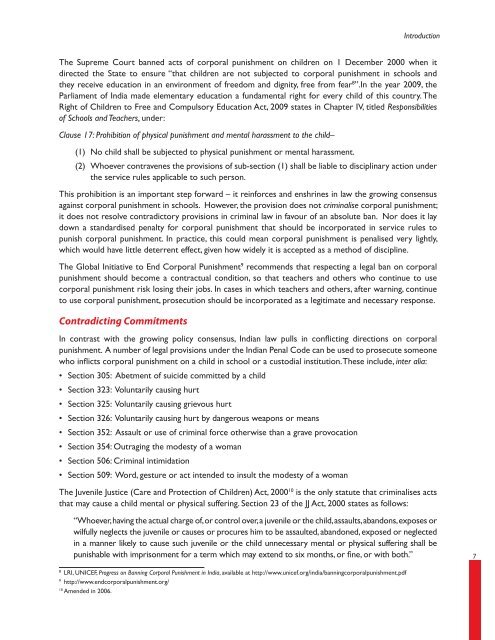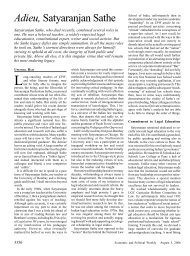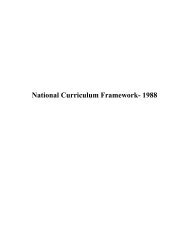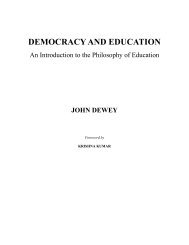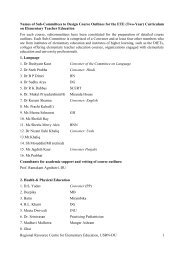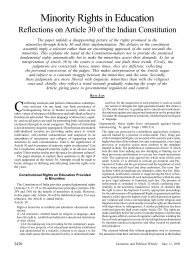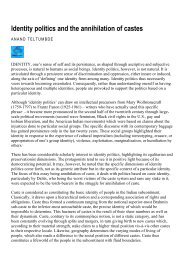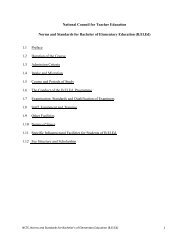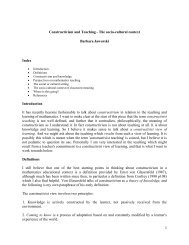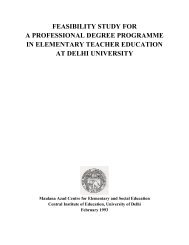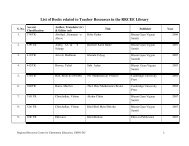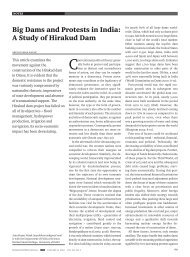Eliminating <strong>Corporal</strong> <strong>Punishment</strong> in Schoolseducational measures to protect the child from all forms of physical or mental violence, injury or abuse,neglect or negligent treatment, maltreatment or exploitation, including sexual abuse, while in the care ofparent(s), legal guardian(s) or any other person who has the care of the child’. There is no ambiguity: ‘allforms of physical or mental violence’ does not leave room for any level of legalized violence against children.<strong>Corporal</strong> punishment and other cruel or degrading forms of punishment are forms of violence and Statesmust take all appropriate legislative, administrative, social and educational measures to eliminate them. 2 ”In its examination of States’ reports on progress towards implementing the Convention, the Committeehas recommended prohibition of corporal punishment to more than 160 States, including India in 2000 andagain in 2004. The Committee’s concluding observations on India’s second report state: “The Committeenotes the decision of the New Delhi High Court of December 2000 regarding prohibition of corporalpunishment in the schools under its jurisdiction, but remains concerned that corporal punishment is notprohibited in the schools of other States, in the family, nor in other institutions for children, and remainsacceptable in society.“The Committee strongly recommends that the State party prohibit corporal punishment in the family,in schools and other institutions and undertake education campaigns to educate families, teachers andother professionals working with and/or for children on alternative ways of disciplining children.” 3In 2006, the report of the UN Secretary-General’s Study on violence against children was submitted tothe UN General Assembly. Among its key recommendations was that all States should urgently prohibit allforms of violence against children, including all corporal punishment.In the context of the almost universal ratification of the CRC, repeated recommendations from theCommittee on the Rights of the Child and other UN Treaty Bodies and follow-up to the UNSG’s Study,there is now rapidly accelerating global progress. By October 2011, 31 States had achieved a completeban on corporal punishment in all settings, including the home. A substantial majority of States (120) hasbanned all corporal punishment in schools (for details of progress, see www.endcorporalpunishment.org).In 2009 India enacted the Right of Children to Free and Compulsory Education Act which explicitlyprohibited physical punishment and mental harassment in schools in its Section 17 (this protects childrenaged between 6 and 14 – the current limits of compulsory education).A Legal Perspective in IndiaArticle 21 of the Constitution protecting the ‘Right to Life’ is the first point of reference here. It has beeninterpreted to include the right to education for children under 14, and the right to dignity 4 . Article 21Aprovides that the State “shall provide free and compulsory education” to children within this age group.It thus moves universal primary education from an aspirational Directive Principles of State Policy toa Constitutional obligation that Central and State Governments are duty-bound to deliver. The ChildRights’ Charter (2003) of India specifically states that: “All children have a right to be protected againstneglect, maltreatment, injury, trafficking, sexual and physical abuse of all kinds, corporal punishment, torture,exploitation, violence and degrading treatment.” 5 Prohibition and elimination of corporal punishment inschools is identified as a priority in the National Plan of Action for Children (2005) 6 and in the report onchild protection in the National Plan for 2007–2012. The National Policy on Education (1986, modified 1992)states that “corporal punishment will be firmly excluded from the educational systems. 7 ”62UN Committee on the Rights of the Child (CRC), CRC General Comment No. 8, 2006: The Right of the Child to Protection from <strong>Corporal</strong> <strong>Punishment</strong>and Other Cruel or Degrading Forms of <strong>Punishment</strong> (Arts. 19; 28, Para. 2; and 37, inter alia), 2 March 2007, CRC/C/GC/8, available at:http://www.unhcr.org/refworld/docid/460bc7772.html3CRC/C/15/Add.228, Concluding observations on second report, Paras 44 and 45, 26 February 2004.4Unnikrishnan v. State of Andhra Pradesh, (1993) 1 SCC 645; M.C. Mehta v. State of Tamil Nadu & Ors., (1996) 6 SCC 756.5National Commission for the Protection of Child Rights, 2008, Protection of Children against <strong>Corporal</strong> <strong>Punishment</strong> in Schools and Institutions:Summary Discussions by the Working Group on <strong>Corporal</strong> <strong>Punishment</strong>, p.14, available at http://www.ncpcr.gov.in/Reports/Protection_of_Children_against_<strong>Corporal</strong>_<strong>Punishment</strong>_in_Schools_and_Institutions_December_2008.pdf6NPA, 2005. Article 7(f).7NPE, 1986 (modified 1992), S. 5.2.
IntroductionThe Supreme Court banned acts of corporal punishment on children on 1 December 2000 when itdirected the State to ensure “that children are not subjected to corporal punishment in schools andthey receive education in an environment of freedom and dignity, free from fear 8 ”.In the year 2009, theParliament of India made elementary education a fundamental right for every child of this country. TheRight of Children to Free and Compulsory Education Act, 2009 states in Chapter IV, titled Responsibilitiesof Schools and Teachers, under:Clause 17: Prohibition of physical punishment and mental harassment to the child–(1) No child shall be subjected to physical punishment or mental harassment.(2) Whoever contravenes the provisions of sub-section (1) shall be liable to disciplinary action underthe service rules applicable to such person.This prohibition is an important step forward – it reinforces and enshrines in law the growing consensusagainst corporal punishment in schools. However, the provision does not criminalise corporal punishment;it does not resolve contradictory provisions in criminal law in favour of an absolute ban. Nor does it laydown a standardised penalty for corporal punishment that should be incorporated in service rules topunish corporal punishment. In practice, this could mean corporal punishment is penalised very lightly,which would have little deterrent effect, given how widely it is accepted as a method of discipline.The Global Initiative to End <strong>Corporal</strong> <strong>Punishment</strong> 9 recommends that respecting a legal ban on corporalpunishment should become a contractual condition, so that teachers and others who continue to usecorporal punishment risk losing their jobs. In cases in which teachers and others, after warning, continueto use corporal punishment, prosecution should be incorporated as a legitimate and necessary response.Contradicting CommitmentsIn contrast with the growing policy consensus, Indian law pulls in conflicting directions on corporalpunishment. A number of legal provisions under the Indian Penal Code can be used to prosecute someonewho inflicts corporal punishment on a child in school or a custodial institution. These include, inter alia:• Section 305: Abetment of suicide committed by a child• Section 323: Voluntarily causing hurt• Section 325: Voluntarily causing grievous hurt• Section 326: Voluntarily causing hurt by dangerous weapons or means• Section 352: Assault or use of criminal force otherwise than a grave provocation• Section 354: Outraging the modesty of a woman• Section 506: Criminal intimidation• Section 509: Word, gesture or act intended to insult the modesty of a womanThe Juvenile Justice (Care and Protection of Children) Act, 2000 10 is the only statute that criminalises actsthat may cause a child mental or physical suffering. Section 23 of the JJ Act, 2000 states as follows:“Whoever, having the actual charge of, or control over, a juvenile or the child, assaults, abandons, exposes orwilfully neglects the juvenile or causes or procures him to be assaulted, abandoned, exposed or neglectedin a manner likely to cause such juvenile or the child unnecessary mental or physical suffering shall bepunishable with imprisonment for a term which may extend to six months, or fine, or with both.”78LRI, UNICEF, Progress on Banning <strong>Corporal</strong> <strong>Punishment</strong> in India, available at http://www.unicef.org/india/banningcorporalpunishment.pdf9http://www.endcorporalpunishment.org/10Amended in 2006.


